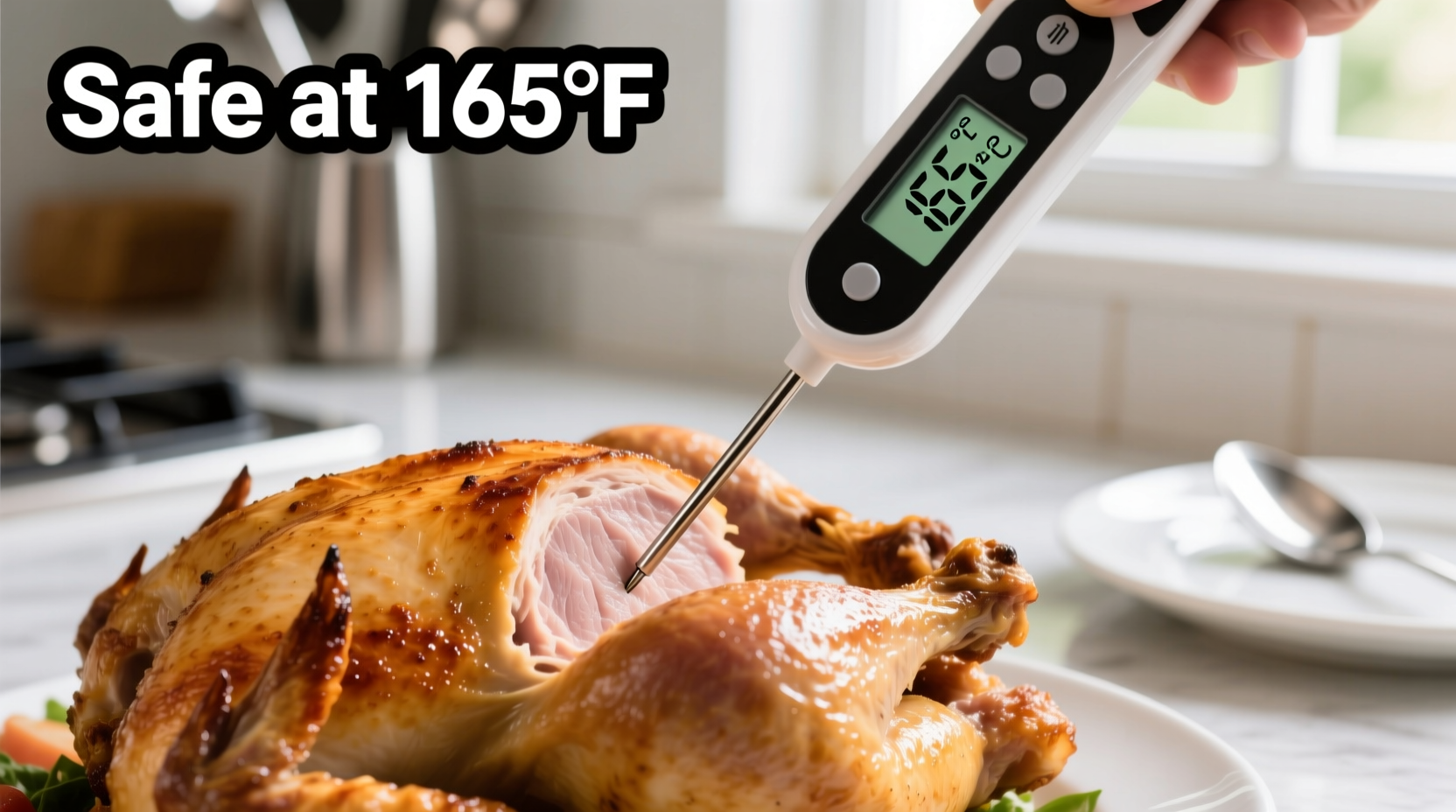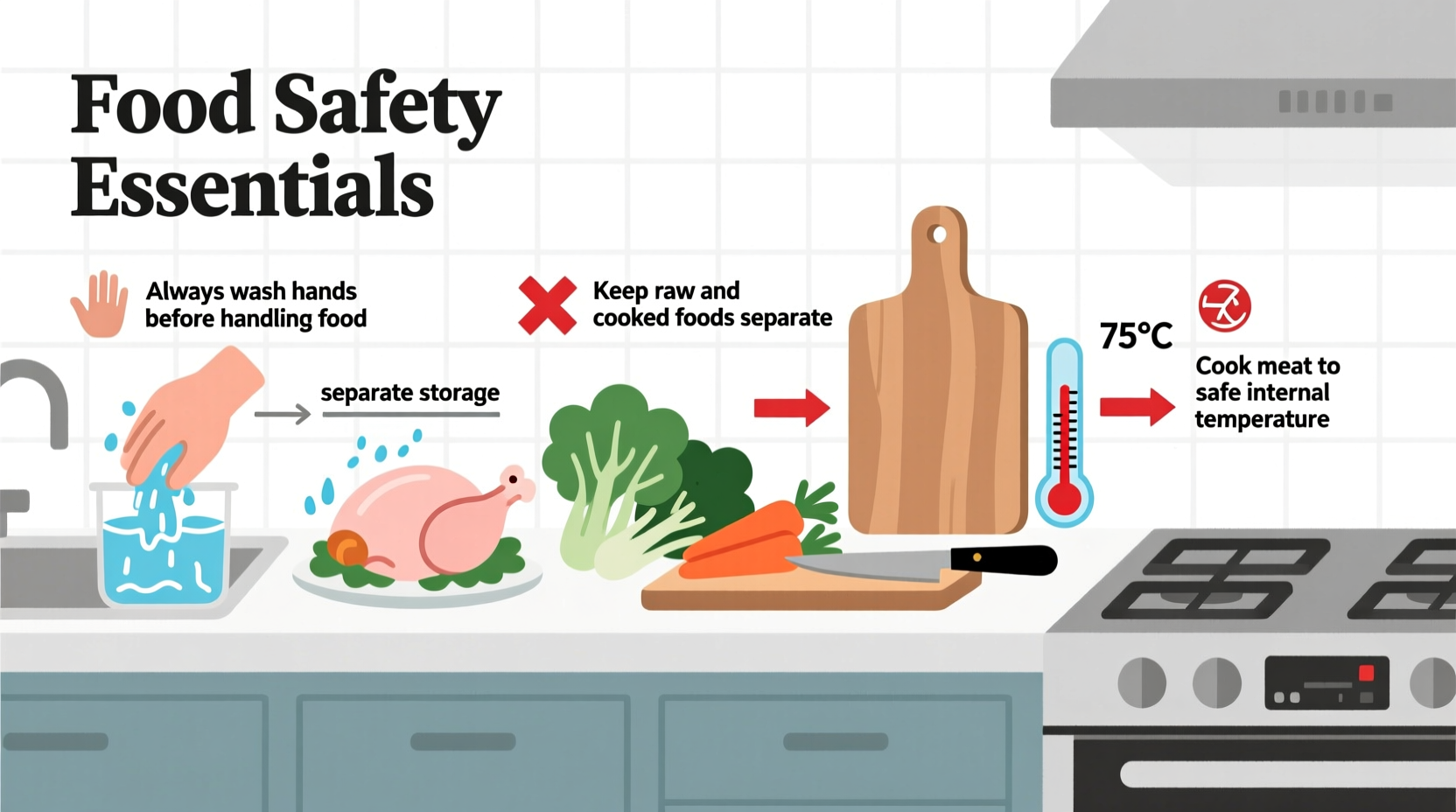Every year, unsafe food causes approximately 48 million illnesses, 128,000 hospitalizations, and 3,000 deaths in the United States alone, according to the Centers for Disease Control and Prevention (CDC). Understanding fundamental food safety practices isn't just helpful—it's potentially life-saving. Whether you're meal prepping, hosting a holiday dinner, or simply making lunch, implementing proper food safety measures dramatically reduces your risk of foodborne illness.
The Four Pillars of Safe Food Handling
Professional kitchens and health organizations worldwide agree on four critical principles that form the foundation of food safety. These aren't complicated techniques reserved for experts—they're practical habits anyone can implement immediately.
Clean: Your First Line of Defense
Proper handwashing remains the single most effective way to prevent foodborne illness transmission. The Food and Drug Administration (FDA) recommends washing hands for at least 20 seconds with soap and warm water:
- Before handling food
- After touching raw meat, poultry, or seafood
- After using the restroom
- After handling garbage
- After sneezing or coughing
Additionally, sanitize all kitchen surfaces and utensils that contact food. A simple solution of one tablespoon of unscented liquid chlorine bleach per gallon of water effectively kills most foodborne pathogens on countertops and cutting boards.
Cook: Temperature Matters More Than You Think
Many people rely on visual cues like color change to determine if food is cooked properly, but this method is dangerously unreliable. The only accurate way to ensure food safety is by using a food thermometer. Here are the minimum safe internal temperatures according to USDA guidelines:
| Food Type | Minimum Internal Temperature | Rest Time |
|---|---|---|
| Poultry (chicken, turkey, duck) | 165°F (73.9°C) | No rest required |
| Ground meats (beef, pork, veal, lamb) | 160°F (71.1°C) | No rest required |
| Fresh beef, veal, lamb (steaks, roasts, chops) | 145°F (62.8°C) | 3 minutes |
| Pork | 145°F (62.8°C) | 3 minutes |
| Fish and shellfish | 145°F (62.8°C) | No rest required |
Chill: Understanding the Danger Zone
The temperature danger zone—where bacteria multiply rapidly—spans from 40°F to 140°F. Within this range, pathogens can double in number every 20 minutes. The timeline below shows how quickly bacteria can reach dangerous levels:
| Time at Room Temperature | Bacterial Growth | Food Safety Risk |
|---|---|---|
| 0-2 hours | Minimal growth | Generally safe |
| 2-4 hours | Significant multiplication | Use immediately or discard |
| 4+ hours | Exponential growth to dangerous levels | Must discard - high illness risk |
Refrigerate perishable foods within two hours (one hour if temperatures exceed 90°F). Keep your refrigerator at or below 40°F and freezer at 0°F or lower. Use appliance thermometers to verify temperatures, as built-in dials are often inaccurate.
Combat Cross-Contamination: The Silent Culprit
Cross-contamination causes nearly 50% of foodborne illness outbreaks in home kitchens. This occurs when harmful bacteria transfer from one food or surface to another. Prevent cross-contamination by:
- Using separate cutting boards for raw meats and ready-to-eat foods
- Never placing cooked food on a plate that previously held raw meat
- Washing fruits and vegetables under running water before preparation
- Storing raw meats on the bottom shelf of your refrigerator

Common Foodborne Pathogens: What You Need to Know
Understanding the most common culprits behind foodborne illness helps you take targeted prevention measures. The CDC identifies these pathogens as responsible for the majority of food-related illnesses:
Salmonella
Found in raw poultry, eggs, unpasteurized milk, and contaminated produce. Causes diarrhea, fever, and abdominal cramps 6-48 hours after ingestion. Most people recover within 4-7 days, but it can be fatal for vulnerable populations. According to the FDA, proper cooking to 165°F destroys Salmonella.
E. coli (Escherichia coli)
Particularly dangerous strains like O157:H7 are found in undercooked ground beef, raw milk, and contaminated water. Symptoms include severe stomach cramps, diarrhea (often bloody), and vomiting. The USDA reports that cooking ground beef to 160°F eliminates E. coli risk.
Listeria
Unique among foodborne pathogens because it can grow at refrigerator temperatures. Found in deli meats, soft cheeses, and unpasteurized dairy. Particularly dangerous for pregnant women, older adults, and immunocompromised individuals. The CDC reports that Listeria causes approximately 1,600 illnesses and 260 deaths annually in the US.
Norovirus
The most common cause of foodborne illness outbreaks, responsible for 50-70% of gastroenteritis cases. Often spread through improper hand hygiene by food handlers. Symptoms include diarrhea, vomiting, and stomach pain appearing 12-48 hours after exposure.
Special Considerations for Vulnerable Populations
Certain groups require extra food safety precautions due to higher risk of severe complications from foodborne illness:
- Pregnant women: Avoid soft cheeses, deli meats, and raw sprouts due to Listeria risk
- Children under 5: Serve smaller portions of high-risk foods and ensure thorough cooking
- Adults over 65: Pay special attention to refrigerator temperatures and food expiration dates
- Immunocompromised individuals: Avoid raw or undercooked foods entirely
The FDA's Food Code specifically addresses these heightened risks, recommending additional precautions for households with vulnerable members.
Debunking Common Food Safety Myths
Misinformation about food safety abounds. Let's examine some persistent myths:
Myth: "If it smells fine, it's safe to eat."
Fact: Many dangerous bacteria like Listeria and E. coli don't produce noticeable odors. The USDA states that smell alone cannot determine food safety.
Myth: "The 'five-second rule' prevents contamination."
Fact: Research published in the Journal of Applied Microbiology shows bacteria transfer to food almost immediately upon contact with contaminated surfaces.
Myth: "Freezing kills all bacteria and pathogens."
Fact: Freezing only slows bacterial growth but doesn't eliminate pathogens. The FDA confirms that proper cooking remains essential even for previously frozen foods.
Practical Food Safety Checklist
Implement these evidence-based practices immediately to reduce your foodborne illness risk:
- Shopping: Place raw meats in plastic bags to prevent drips; shop for perishables last
- Transporting: Get groceries home within 2 hours (1 hour if above 90°F); use insulated bags for perishables
- Storing: Keep refrigerator below 40°F; organize by temperature zones (coldest at bottom)
- Preparing: Wash hands before and after handling different food groups; use color-coded cutting boards
- Cooking: Always use a food thermometer; don't rely on appearance alone
- Leftovers: Divide large portions into shallow containers; refrigerate within 2 hours
Following these guidelines consistently can reduce your household's foodborne illness risk by up to 70%, according to research from the National Institutes of Health.
Trusted Resources for Ongoing Learning
Stay updated with the latest food safety information from these authoritative sources:
- FDA Food Safety Education
- CDC Food Safety Resources
- USDA Food Safety and Inspection Service
- World Health Organization Food Safety Fact Sheets
These organizations provide evidence-based guidance that evolves as new research emerges, helping you maintain the highest food safety standards in your kitchen.
How long can leftovers safely stay in the refrigerator?
Most cooked leftovers remain safe for 3-4 days when stored at 40°F or below. The USDA recommends labeling containers with preparation dates and discarding anything older than four days. Some foods like cooked rice and pasta have shorter shelf lives (3-5 days) due to potential Bacillus cereus growth.
Is it safe to thaw meat on the counter?
No, thawing meat at room temperature allows the outer layers to enter the temperature danger zone (40°F-140°F) while the inside remains frozen. The FDA recommends three safe thawing methods: in the refrigerator, in cold water (changing water every 30 minutes), or in the microwave using the defrost setting followed by immediate cooking.
Do I need to wash pre-washed bagged greens?
The FDA states that if bagged greens are labeled "ready-to-eat," "washed," or "triple washed," additional washing at home provides minimal safety benefit and may even increase contamination risk through improper handling. However, if you choose to wash them, use clean hands and sanitized surfaces, and dry thoroughly with a clean paper towel or salad spinner.
How often should I replace kitchen sponges and dishcloths?
The CDC recommends replacing kitchen sponges every two weeks and dishcloths daily. Research from the University of Arizona shows that kitchen sponges can harbor up to 10 million bacteria per square inch. To sanitize sponges between uses, microwave a wet sponge for two minutes or run through the dishwasher with a drying cycle.
Can I get food poisoning from properly cooked food?
Yes, if cross-contamination occurred during preparation. Even if food reaches safe internal temperatures, pathogens from raw ingredients can transfer to cooked food via contaminated surfaces, utensils, or hands. This is why preventing cross-contamination throughout the entire food preparation process is as crucial as proper cooking temperatures.











 浙公网安备
33010002000092号
浙公网安备
33010002000092号 浙B2-20120091-4
浙B2-20120091-4